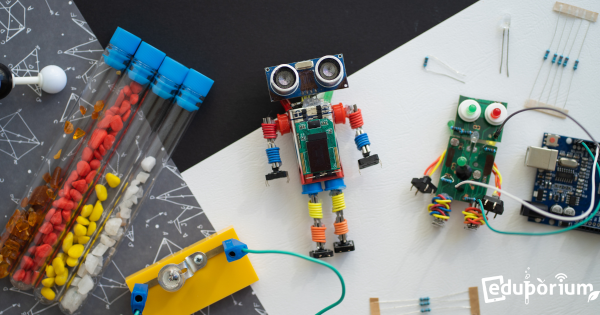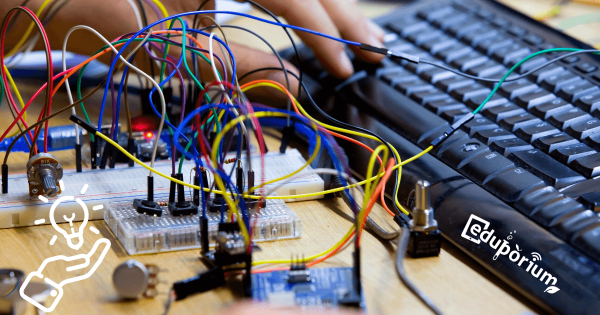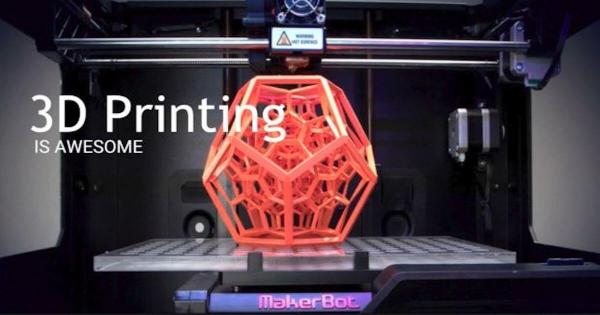Here at Eduporium, we want to make this year’s Thanksgiving all about STEAM. Science, technology, engineering, art + design, and math: we are constantly reminded of the importance of these subjects for driving forward our nation’s economy. And it got us wondering: what does STEAM really mean for us?
Maker Ed
Maker Ed has rapidly evolved into a big and important component of 21st century learning. Born out of the culturally impactful Maker Movement, maker education involves providing students with opportunities for hands-on construction, investigation, problem solving, collaboration, and more—all with this community-centric approach. In Maker Ed, students often excel with new types of opportunities to showcase their skills or to develop new ones. With so many potential projects to work on in the classroom or in school makerspaces, adding purposeful, hands-on work to the school day is very effective and inspiring. And, more importantly for educators, there's no wrong way for them to go about introducing maker education. It can be as complex as using various advanced 3D printers or as simple as building with popsicle sticks.
Aside from the likelihood of positively impacting students, Maker Ed is also popular because of its real-world connections. Not only can children further develop key technical skills, maker opportunities also help them to bolster some top soft skills. Making typically involves a lot of collaboration and this is especially true as students move into middle or high school. With unique, fluid opportunities, kids can simultaneously work on bolstering communication, teamwork, and other soft skills in the process. Plus, whether they are using classroom 3D printers, CNC machines, or even low-tech tools, they'll grasp a better understanding on using technology for good as well. Some solid product lines across Maker Ed are 3Doodler, MakerBot, LulzBot, Glowforge, and more. With these innovative solutions, students in all grade levels can truly propel their creative acumen.
-
Assistive Tech Makethon—Start to Finish in 48 Hours
I wholeheartedly suggest encouraging kids, students, and peers to attend hackathons or makeathons, or community innovation days. Better yet, host one in your community! Let me tell you about my experience, and why I feel that being part of a group of people, making something together, is an invaluable experience.
-
Throwback Thursday! 3D Printers: Then and Now
As you might know, 3D printing has been around for a while. Here’s a little timeline. Fused Deposition Modeling (FDM) was developed by S. Scott Crump. This involves producing a model by extruding small beads of material which harden immediately to form layers. This method of 3D printing eventually took off with commercial and DIY enthusiasts.






